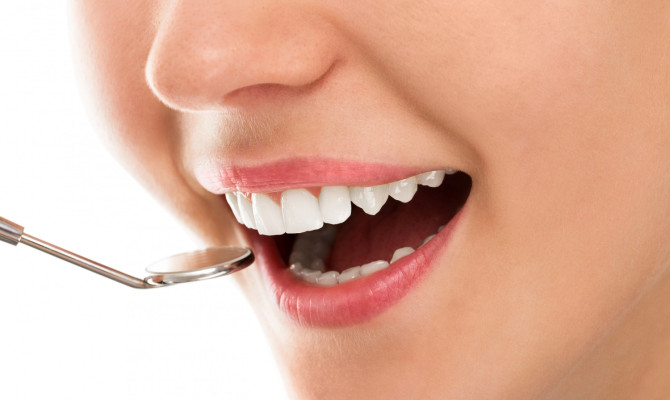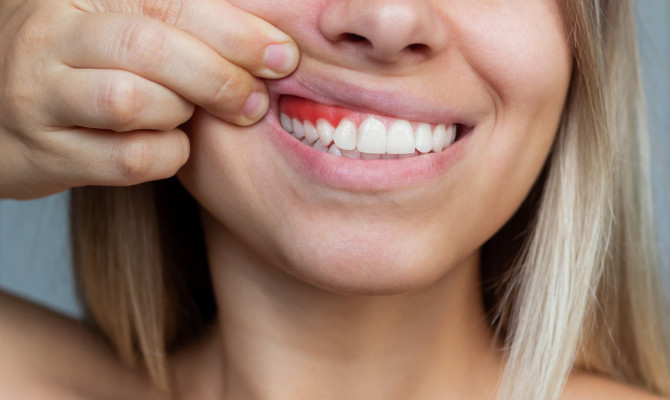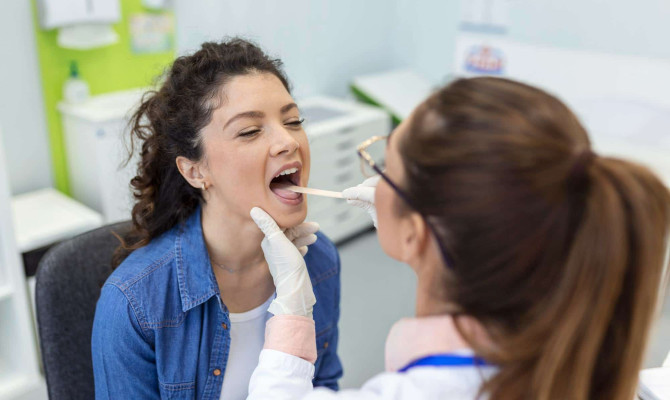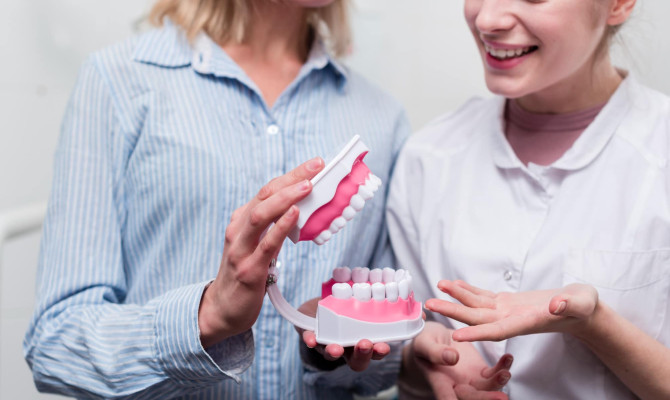Leukoplakia: What do you need to know?

- leukoplakia
- 16 Aug 2023
Overview
What is Leukoplakia?
Leukoplakia is characterized by the development of thicker, white or grey patches on the mucous membranes of the mouth, tongue, or other areas of the oral cavity. From the Greek words “leuko,” which means white, and “plakos,” which means patch, comes the phrase.
This article offers an in-depth discussion of Leukoplakia, illuminating its numerous facets and helping readers better understand this disorder.1Overview| Researched based study from Nlm.nih.gov
Symptoms
What are the symptoms of Leukoplakia?
The common symptoms include
- White or gray patches in the oral cavity
- Pain or discomfort
- Change in taste
- Irregular borders
- Persistent lesions
Thickened patches
- The primary symptom of this condition is the presence of thickened, white, or grey patches on the tongue, gums, or other parts of the mouth. They have a surface that is rough or textured and an uneven form.
Persistent lesions
- Usually, the patches last for a few weeks or months. They can be flat or slightly elevated, but they often do not go away or become better by themselves.
Uneven boundaries
- The edges of the lesion might be wavy or blurry, merging with the normal tissues around them.
Any discomfort or pain
- When certain foods, drinks, or dental equipment irritate the lesions, it can occasionally produce discomfort, soreness, or a burning feeling.
Associated symptoms
- Depending on where and how bad it is, people may have trouble swallowing, a lasting painful throat, or a lump.1Symptoms| Researched based study from Nlm.nih.gov
Leukoplakia cheek
- It can develop on the inner cheeks and other parts of the oral cavity. Similar methods to treat other oral conditions can be used to control Leukoplakia on the cheeks.1Symptoms| Researched based study from Nlm.nih.gov
Causes
Leukoplakia causes
Chronic irritation
- The oral mucosa being repeatedly irritated or injured is a significant contributing cause. Chronic cheek biting, and repeated exposure to irritants, including alcohol, cigarette smoke, rough teeth, loose dentures, and rough teeth, can all cause triggers.
Tobacco use
- Tobacco use, including chewing tobacco or snuff usage, and smoking cigarettes, cigars, or pipes, are closely connected.1Causes| Researched based study from Nlm.nih.gov The compounds’ ability to irritate oral tissues can increase the danger.
Alcohol consumption
- Another important risk factor is regular, heavy drinking. The immune system might be weakened, and the oral mucosa can experience continuous irritation, which makes the tissues more prone to lesions.
Strains like human papillomavirus (HPV)
- HPV-16 has been linked to growth. Compared to non-HPV-linked Leukoplakia, they are more prevalent in younger people and have a greater chance of malignant development.1Causes| Researched based study from Nlm.nih.gov
Inadequate oral hygiene practices
- This includes infrequent brushing, flossing, and routine dental exams, which might be a factor. Plaque and bacteria buildup in the mouth can cause oral mucosal inflammation and discomfort.
Nutritional deficiencies
- Iron, vitamin A, B2, or folic acid deficiency may increase the risk. A balanced diet with an adequate intake of essential nutrients is important.1Causes| Researched based study from Nlm.nih.gov
Diagnosis
Diagnosis of Leukoplakia
Medical history
- The doctor will ask you about your medical history, any symptoms you may be having, and if you use alcohol or smoke.
Physical evaluation
- They may do a thorough examination of the mouth and apply a special light or dye to highlight the spots.2Diagnosis| Researched based study from Nlm.nih.gov
Biopsy
- This will be done to establish whether the lesion is malignant, precancerous, or benign.2Diagnosis| Researched based study from Nlm.nih.gov
Further tests
- To eliminate any other possible reasons, this could be necessary. X-rays, MRI scans, and other specialized testing could be used in this.2Diagnosis| Researched based study from Nlm.nih.gov
Treatment
Leukoplakia treatment
Here are some common approaches:
Cessation of tobacco use
- If you use cigarettes in any way, you must stop immediately to stop future harm and advancement. This includes chewing tobacco, smokeless tobacco, and cigarettes.
Medications
- Medical practitioners may occasionally prescribe retinoid (vitamin A derivatives) medications to lessen the size and thickness of patches—these drugs function by boosting the development of healthy cells and removing abnormal ones.
Follow-up and monitoring
- After any treatment, it is essential to have regular follow-up visits with your doctor. They will monitor the healing process, evaluate the effectiveness of the treatment and check for any signs of recurrence or development of oral cancer.2Treatment| Researched based study from Nlm.nih.gov
Leukoplakia medical procedure
Surgery for removal
- If the patches are significant, persistent, or if dysplasia (irregular cellular alterations) is evident. Surgery removal can be required. This surgery involves removing the patches and occasionally a thin margin of surrounding healthy tissue. The tissue may also be biopsied to look for any signs of malignancy.
Laser therapy
- You may use it to take the patches off. While causing the least amount of harm to the surrounding healthy tissue, the laser pinpoints and vaporizes the aberrant tissue. This approach is often used for smaller patches or in cases where surgical removal is not feasible.2Treatment| Researched based study from Nlm.nih.gov
Cryotherapy
- Using liquid nitrogen, the patches are frozen. The cold destroys the abnormal cells, and the dead tissue eventually peels off. Smaller lesions are often used for it.
Electrocautery
- This burns and removes patches using an electric current. The abnormal cells are destroyed by the heat produced by the electric current. Smaller areas may be treated with it, although scarring is a risk.
A photodynamic treatment
- Applying a photosensitizing chemical to the patches is required for this. The patches are exposed to a specific wavelength of light after a set amount of time, which activates the agent and causes the aberrant cells to die.2Treatment| Researched based study from Nlm.nih.gov
Salt water rinse
Saltwater rinses have a few potential benefits and can be used as a supportive intervention in controlling lesions. Here are some applications for them:3Treatment| Researched based study from Nlm.nih.gov
- Saltwater solution: Half a teaspoon of salt should be dissolved in a cup of warm water to create a solution.
- Rinse your mouth: Sip and swirl it in your mouth for between 30 and 60 seconds. Pay attention to the region where patches are present.
- Spitting out: Spit the solution out after swishing. Do not ingest it.
- Repeat: Two to three times each day, repeat the rinse procedure.
The mouth may feel more at ease, and the warm seawater may lessen the irritation. Bacteria and debris can both be removed.
It is important to remember that they should only be used as a supporting measure and not as a final solution.
Precautions
What should I do if I have Leukoplakia?
If you have such suspicion, it is essential to take the following actions:
- Consult a physician and give a complete medical history
- Adhere to their suggestions.
- Give up alcohol and cigarette usage.
- Maintain proper oral hygiene
- Follow-up consultations.2Precautions| Researched based study from Nlm.nih.gov
Is leukoplakia serious?
- It is not considered malignant or life-threatening as such. However, because it may be an early sign of oral cancer, it is considered a potentially dangerous disease.
- The presence suggests abnormalities in the oral mucosa cells, which can result in aberrant cell development and eventually lead to oral cancer.
- Even though most instances do not worsen, the illness must be taken carefully because of its risk.
- Early identification, prompt treatment, and lifestyle change can significantly lower the chance of progression.1Precautions| Researched based study from Nlm.nih.gov
How do you stop Leukoplakia from spreading?
- Give up using cigarettes in any way. Avoid drinking alcohol.
- Use fluoride toothpaste, floss daily, brush your teeth at least twice daily, and rinse your mouth with an antimicrobial mouthwash.
- To ensure the early identification of any changes, schedule frequent dental checkups.
- Maintaining a healthy weight by eating a well-balanced diet of fruits and vegetables.
- Drink plenty of water and cut out on acidic and sugary meals and beverages.2Precautions| Researched based study from Nlm.nih.gov
Can Leukoplakia heal on its own?
- Sometimes, if the underlying cause—such as cigarette use—is removed, it can cure on its own. It’s crucial to remember that it shouldn’t be ignored or assumed to get better on its own without medical care.3Precautions| Researched based study from Nlm.nih.gov
- Not all patches will resolve independently; some may continue or worsen despite alterations in lifestyle. To lessen the chance of difficulties, it is essential to obtain expert help.
Complications
What are the complications?
Dysplasia
- Dysplasia, which indicates abnormal cellular proliferation and a greater chance of developing into oral cancer, can evolve from Leukoplakia in varying degrees. To see any changes and choose the best course of action, dysplasia monitoring is essential.
A malignant transformation
- Leukoplakia cells are capable of undergoing malignant transformation, which makes them carcinogenic. Oral cancer may develop due to this transition, necessitating harsher treatment options such as surgery, radiation therapy, and chemotherapy.
Metastatic and spread
- Cancer cells risk migrating to surrounding tissues and possibly other body areas. The prognosis and therapy may become more difficult as a result of metastasis.
Impact on quality of life
- Leukoplakia and any potential side effects may have a substantial influence on a person’s quality of life. The condition may make swallowing, speaking, or eating painful, uncomfortable, or difficult. Well-being can also be impacted by psychological stress and worry linked to cancer risk.4Complications| Researched based study from Nlm.nih.gov
Takeaway
Takeaway
Leukoplakia is a potentially serious condition and should be managed promptly if suspected. It can become cancerous, if care not taken. It is essential to take the required measures including medications, lifestyle changes to help prevent further progression and complications.
Any feedback on this article?
 This Articles content was accurate
This Articles content was accurate Very Informative Article
Very Informative Article I have a question or a comment
I have a question or a comment
 This article contains inaccurate content
This article contains inaccurate content This article was not helpful
This article was not helpful I have a question or a comment
I have a question or a comment
We appreciate your helpful feedback!
Checkout our social pages
References
-
National Library of Medicine
Oral Leukoplakia | Overview | Symptoms | Causes
-
National Library of Medicine
Interventions for treating oral leukoplakia to prevent oral cancer | Diagnosis | Treatment
-
National Library of Medicine
Chlorhexidine mouthrinse as an adjunctive treatment for gingival health | Treatment
-
National Library of Medicine
Oral Leukoplakia – an Update | Complications | Preventions




































